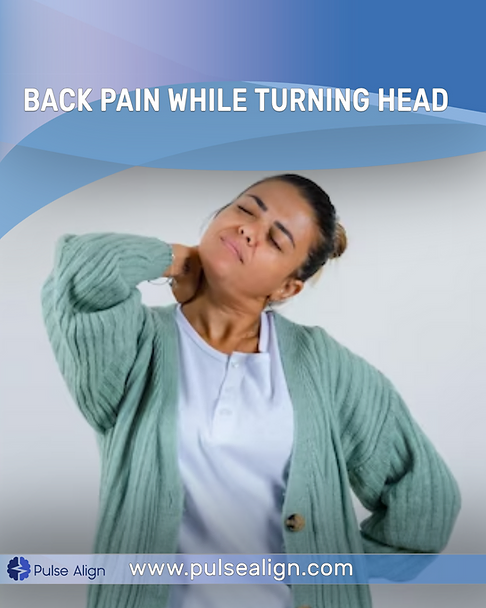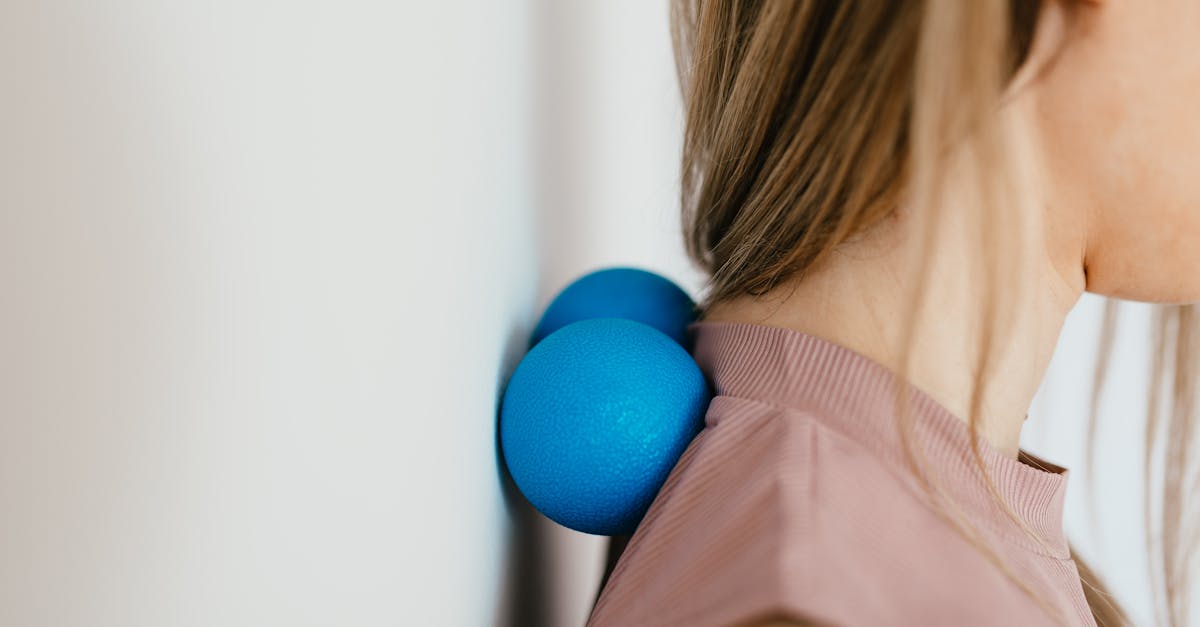Turning the head seems like a simple and natural movement, something we do countless times a day without giving it a second thought. However, for some individuals, this seemingly innocuous action can lead to intense back pain.
If you’ve ever experienced discomfort or pain when turning your head, it’s crucial to explore the root causes and consider when it might be time to consult a specialist. In this blog, we’ll delve into the complexities of back pain associated with turning the head, shedding light on potential causes, and a promising holistic solution known as Pulse Align.
The prevalence of back pain is a significant global issue. According to estimates, around 540 million people worldwide experience back pain at any given moment. In the United States specifically, back problems are widespread, with 8 out of 10 individuals encountering back-related issues at least once or more during their lives.
Before diving into the specifics of head-turning-related back pain, it’s essential to understand the intricate anatomy of the neck and spine. The cervical spine, comprising seven vertebrae, supports the weight of the head and facilitates various movements, including rotation, Ligaments, muscles, and nerves work in harmony to ensure smooth and pain-free motion.
Common Causes of Back Pain While Turning the Head
Back pain during head rotation can stem from various factors, each requiring a unique approach for effective management. Some common causes include
Muscle Strain
When muscles in the neck and upper back are overused or strained, turning the head can exacerbate discomfort. In the United States, it has been reported that 85% of back pain cases stem from strained muscles.
Cervical Spondylosis
This age-related condition involves the wear and tear of the spinal discs and joints, potentially leading to pain and stiffness during movement.
Herniated Disc
A herniated disc in the cervical spine may compress nerves, causing pain and limiting head movement.
Whiplash
Accidents or sudden impacts can result in whiplash, leading to neck pain that intensifies during head rotation.
Treatment OF Back Pain While Turning the Head
Maintain Proper Posture
Ensure that you maintain good posture while sitting, standing, and walking. Sit up straight with your shoulders back to avoid putting unnecessary strain on your back.
Neck Stretches
Gentle neck stretches may help relieve tension in the neck and upper back. Slowly turn your head from side to side, and gently tilt your head from side to side. Avoid making sudden or forceful movements.
Over-the-Counter Pain Medications
Non-prescription pain relievers, such as ibuprofen or acetaminophen, may help reduce pain and inflammation. However, it’s essential to follow the recommended dosage and consult with a healthcare professional if you have any concerns.
Avoid Prolonged Positions
If your work or daily activities involve prolonged periods of sitting or standing, try to change positions frequently. Take short breaks to stretch and move around.
Pillow Support
Ensure that your pillow provides adequate support for your neck while sleeping. The goal is to maintain a neutral spine position during sleep.
Avoid Heavy Lifting
If possible, avoid lifting heavy objects, especially while turning your head. If lifting is necessary, use proper body mechanics and lift with your legs, not your back.
Consult a Healthcare Professional
If your back pain persists or worsens, it’s crucial to consult with a healthcare professional. They can perform a thorough evaluation, order imaging studies if necessary, and recommend a more specific treatment plan based on your individual needs.
The Pulse Align Approach
Pulse Align represents a paradigm shift in the treatment of back pain associated with head turning. This holistic approach focuses on identifying and addressing the root causes rather than merely alleviating symptoms. Here’s how Pulse Align sets itself apart.
Comprehensive Assessment
Pulse Align practitioners conduct a thorough examination, considering lifestyle factors, posture, and biomechanics to identify the root causes of the pain.
Patient Education
Empowering patients with knowledge about their condition and the importance of lifestyle changes is integral to the Pulse Align philosophy.
Conclusion
In conclusion, experiencing back pain when turning the head should not be ignored. Consultation with a specialist is vital to identify the root causes and explore appropriate interventions. Pulse Align offers a holistic approach that goes beyond symptom management, aiming for a natural return to normal function.
As you consider your well-being, explore the potential benefits of Pulse Align and the transformative power of addressing the root causes of your discomfort. Remember, it’s not about promising complete healing, but rather embracing a journey towards improved overall well-being through natural, holistic approaches.
Are you ready to embark on a path of well-being? Consider lifestyle changes and explore Pulse Align for a holistic and personalized approach to addressing back pain associated with turning the head.
References
Crow, W. T., & Willis, D. R. (2009). Estimating cost of care for patients with acute low back pain: a retrospective review of patient records. Journal of Osteopathic Medicine, 109(4), 229-233. https://www.degruyter.com/document/doi/10.7556/jaoa.2009.109.4.229/html
Werner, P., Al-Hamadi, A., Limbrecht-Ecklundt, K., Walter, S., & Traue, H. C. (2018). Head movements and postures as pain behavior. PloS one, 13(2), e0192767.https://journals.plos.org/plosone/article?id=10.1371/journal.pone.0192767
As the visionary CEO of Pulse Align, François is dedicated to transforming the landscape of pain management and posture health. With a deep-rooted passion for innovation and a commitment to excellence, François leads the team in developing cutting-edge solutions that empower individuals to live healthier, pain-free lives. Under his leadership, Pulse Align has become a beacon of hope and support for those navigating postural-related issues and chronic pain. François brings a wealth of experience in neuromodulation and patient management technologies, combining strategic insight with a compassionate approach to address the unique challenges faced by each individual.




